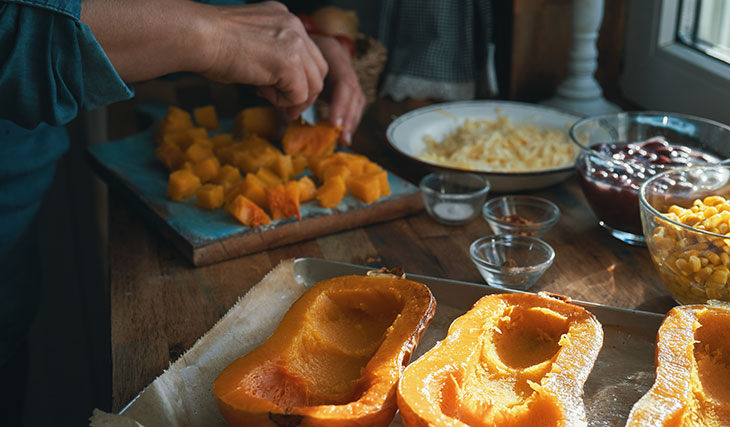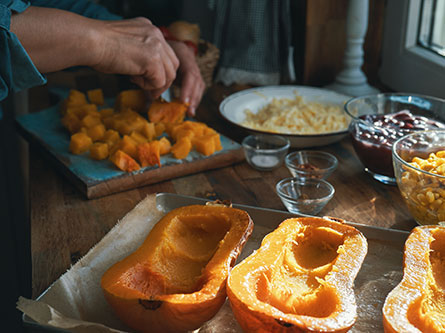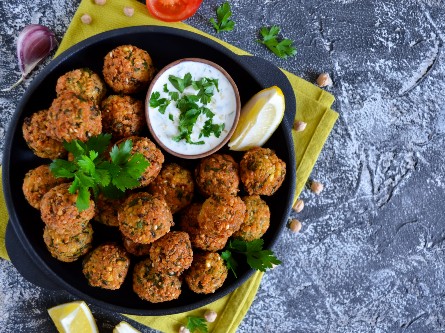
Have you ever wondered about the benefits of vibrant winter squash? How do the different colors play a role in improving your health?
One of the many reasons squash is in high demand during the colder seasons is its high fiber and nutritional density. Some health benefits include improving blood pressure, supporting gut health, and decreasing your risk for certain diseases.
There are over 100 kinds of summer and winter squash. They're all incredibly beneficial fruits (and yes, squash is considered fruit).
Squash is more than just decorative pieces on your Thanksgiving table. Between their antioxidant levels and large list of vitamins, they're one of the best ingredients you could add to your fall or winter dinner menus.
Read more: 8 easy tips for healthy holiday eating (Good Food is Good Medicine)
Here's an overview of the vitamins and minerals that squash contain and ways in which you can enjoy these delicious gourds:
Acorn squash
Acorn squash has a hard, green shell on the outside but is filled with a vibrant, orange middle that's rich in flavor.
Benefits
This squash has a lot of antioxidants, which can boost your immunity and help your body to fight off certain diseases. Acorn squash contains antioxidants like vitamin C that help strengthen bones and blood vessels. It also has vitamin A, which helps improve the health of your lungs, heart and other vital organs.
How to cook
When creating a meal with acorn squash, slice the fruit in half and drizzle olive oil to add healthy fats. You can bake or roast it in your oven and top it off with either savory or sweet seasonings.
Cinnamon can add sweetness to acorn squash while still being nutritious – or even dessert. You can even eat the skin for added fiber.
Butternut Squash
Along with its buttery flavor and vibrant color, this squash almost tastes like a sweet potato. The outside and inside are much firmer than other squash before cooking.
Benefits
Butternut squash contains considerable amounts of fiber, which can help you keep a healthy weight and regulate bowel movements. It's known to help prevent colorectal cancer while the beta-carotene in butternut squash can also improve eye health.
How to Cook
Butternut squash has a much harder inside and needs to cook for longer. Cut this fruit in half, scoop out the seeds, and roast for about 40 minutes for a delicious side dish.
Check out this recipe for roasted squash with wild rice and cranberry (Good Food Is Good Medicine)
Learn the warning signs of early colon cancer (Cultivating Health)
Spaghetti Squash
You may have seen this round, yellow squash in your local grocery store. The inside of spaghetti squash truly looks like spaghetti. It can have a crunchy but delicious texture when cooked.
Benefits
This squash provides you with high amounts of vitamin B6 and fiber. It also contains vitamins A and C which help with gum and overall dental health. People use this as a lower-calorie substitute for spaghetti or to add more nutrition to their meals.
How to cook
When preparing spaghetti squash, you can either cut it in half and roast it or scoop out the middle and discard the outside. This squash can mimic a spaghetti substitute or can work as a normal side dish with butter and/or cheese.
Pumpkin
Pumpkins are round and come in orange, white, or green colors. Their flavor is herbaceous and is one of fall's staple ingredients – from drinks to desserts.
Benefits
This spooky squash is not just a fall decoration. It contains ample vitamins and antioxidants that can help you get through flu season. Pumpkins contain beta-carotene, which your body changes to vitamin A. Vitamin A can improve eye health, reduce your risk of cancer, and boost your immunity to help fight off seasonal illnesses.
How to cook
Pumpkins are one of the biggest flavors during the holiday. You can eat all parts of a pumpkin, so you can find a recipe for every taste. From roasting their seeds with olive oil to cooking their skin as a snack, nothing will go to waste.
Check out these six ways to cook pumpkin (Good Food is Good Medicine)
Read about 5 immune boosters to help keep you healthy amid flu season
Winter squash should always have a place on your table this holiday season. Between beneficial vitamins to high amounts of antioxidants, nothing could beat this as a side dish or a plant-based main meal. Well, maybe twice-baked potatoes.
Health information reviewed by registered dietitian Marie Barone.




